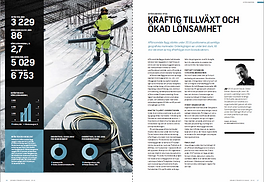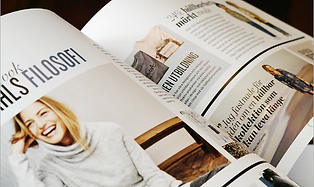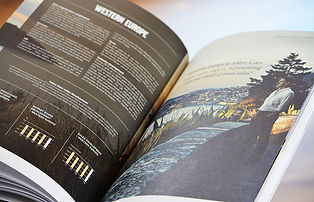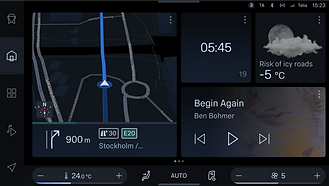Design systems
Creativity, consistency and efficiency
I truly believe that a design system is necessary as a designer not only to to ensure consistency and efficiency, but also to be able to work creatively. Since they enhance the creative process I love this way of working. Here are some examples of how I have used design systems in my work.
How my interest for design systems started
While working at Solberg Communication, I was involved in several large, simultaneous productions. We handled a high volume of annual and sustainability reports for both print and web, typically spanning around 100 pages and produced in multiple languages. These projects were often highly detailed and came with tight deadlines, requiring a high level of accuracy. The pressure was intense, and with a large team, including many freelancers during peak seasons, maintaining consistency and efficiency across productions was a constant challenge.
After some time at the company, I began developing a set of master templates that eventually became the standard for all our productions. These templates allowed us to easily adapt typography and color schemes to match each brand, while maintaining a consistent structure for how we approached each project. This significantly increased productivity across the company. The templates made it simple to adjust font sizes, switch between languages, update tables, and modify colors in ongoing productions—tasks that had previously been cumbersome and time-consuming.
But the real benefit was that the templates freed us up to be more creative. By reducing time spent on error correction and repetitive tasks, we could focus more on refining the design itself.
Large scale production












One system for all productions
-
Typography
-
Colors
-
Tables
-
Spacing
Master Template
for all Solbergs clients
Template
for Client 1
Template
for Client 2
Annual
report
Sustainability
report
Annual
report
Sustainability
report
Version 1
English
Version2
Swedish
Version 1
English
Version2
Swedish
Version 1
English
Version2
Swedish
Version 1
English
Version2
Swedish
Design systems in Figma
Currently, I primarily work with design systems in Figma. One of my key projects has been Smart Dash for Scania, where I’ve been deeply involved in the creation and maintenance of its design system. This system supports a large, complex product and includes components and icons for two different types of screens—one of which is produced in two sizes.
I’m grateful for the opportunity to contribute to such a substantial design system, as it has given me valuable experience and a deep understanding of how to manage large-scale systems, along with the processes required to maintain them effectively.
Three types of screens, Scania

Driver display

Central display 10"

Central display 12"
Why I love design systems
Design systems enhance design quality by providing a cohesive framework that ensures consistency across all aspects of a brand or product. They streamline the design process, enabling teams to work more efficiently while maintaining a unified visual language. By standardizing components, typography, colors, and layouts, design systems minimize redundancy and prevent inconsistencies, allowing designers to focus on creativity and innovation. They also support scalability, ensuring that as a product grows, its design remains cohesive and aligned with the brand’s identity.
While design systems are typically created for specific products, I believe they have far greater potential. As an art director, I see them as powerful tools that can benefit everyone involved in managing a brand. When designed effectively, a design system becomes a resource not just for individual products, but for the entire brand. It serves as a single source of truth, offering valuable guidance to anyone working with the brand.
Unlike traditional graphic manuals, design systems provide more than just rules and limitations—they offer ready-to-use elements such as components, guidelines, design tokens, and even code, making them an indispensable resource for anyone interacting with the brand.

